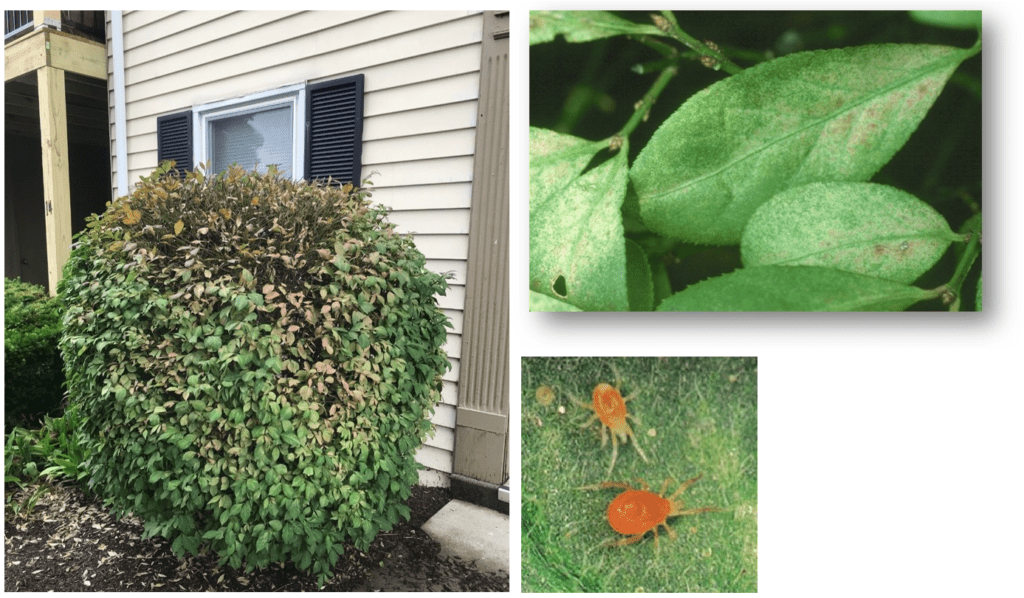 By Joe Ketterer, Director of Quality and Efficiency, Maintenance Division
By Joe Ketterer, Director of Quality and Efficiency, Maintenance Division
Dormant pruning is performed early in the year (January through March) to improve plant health and/or reduce the size of existing plantings that may have become overgrown since their initial planting. When properly timed and executed, dormant pruning will maintain the natural shape and growth habits of the shrub with respect to its flowering, fruiting and foliage characteristics.
All too often, many flowering plants are sheared repeatedly during the course of the growing season, preventing them from showing off the very attributes for which they were planted in the first place. We need to change this horticulturally incorrect practice that has become all too common within our industry/marketplace just because it appears to be faster and more economical. While shearing of some evergreens has its place with respect to maintaining a formal manicured hedge, we need to recognize that it can actually cost more in the long run in terms of total labor costs expended over the course of the entire season or contract year. In many cases, more education regarding proper plant culture and the value of dormant pruning is needed. As we prepare for the 2020 dormant pruning season, it is important to understand why we are doing this and what it means for our customer, the company, and the overall health and appearance of the plant.
 Burning bush that is properly dormant pruned in winter will have a natural shape and appearance in summer (left) and will exhibit bright red leaves in the fall (right)
Burning bush that is properly dormant pruned in winter will have a natural shape and appearance in summer (left) and will exhibit bright red leaves in the fall (right)
Benefits for the Customer:
- Increases the aesthetic and ornamental value of existing plant material. This could include improved flowering, fruiting, foliage and general growth habit or plant shape.
- Improves the overall appearance of the site with more natural looking plants that perform better horticulturally
- Can potentially reduce maintenance costs over time and preserve the integrity of the original design while keeping property values up
- Improves plant health by reducing certain pest populations (i.e. spider mites)
- Rejuvenation pruning of older overgrown or declining material (which is a more extreme version of dormant pruning) can be a cheaper alternative than completely removing and replacing an existing landscape that has simply outgrown its living space and is no longer aesthetically pleasing

Spider mite damage on Winged Euounymous (also known as Burning Bush) is especially common when these plants have been sheared repeatedly vs. dormant pruning. The resulting damage can lead to premature leaf drop which negates the otherwise beautiful bright red fall color for which they are known. Dormant pruning will often eliminate this problem and make the plant more hospitable to beneficial insects such as ladybugs.
Benefits for the Company:
- Reduces overall pruning hours for the entire season by reducing repeated growth flushes. For example, the more you shear, the more you have to shear – and you end up with an unnatural looking branching habit known as “crow’s feet.”
- Reduces our workload and need to work overtime during the hot summer months. Dormant pruning can significantly reduce summer pruning needs, as long as we don’t “undo” the good work that we did in the first quarter with indiscriminate or severe shearing, which would negate the horticultural benefits of dormant pruning and any applied growth regulators by actually encouraging flush growth as a response to severe shearing.
- Improves our reputation and image by implementing more horticulturally correct methods
- Creates enhancement sales opportunities via proposing rejuvenation pruning
It is important to note that not all shrub species require dormant pruning, and not all can be dormant pruned to the same extent or at the same time, as some are more sensitive to cold and the severity of pruning. Not all plants are created equal and therefore should not be treated equally. The ability to identify plants is paramount to the success of dormant pruning. Know your plant material and know when to put down the gas-powered hedge trimmer.
The following species of plants offer the highest gains if properly dormant pruned:
- Euonymus sp. (Manhattan and Burning Bush)
- Hollies sp. (Chinese, Japanese, Inkberry, Winterberry)
- Roses sp. (Knockout and Carpet Roses)
- Barberry sp. (Crimson Pygmy and Julianne)
- Viburnum sp. (Korean Spice, Dentatum, Burkwoodi, etc.)
- Hydrangeas sp. (Paniculata, Macrophylla, Oakleaf, etc.)
- Spireas sp. and Abelia (most summer flowering shrubs)
 By Joe Ketterer, Director of Quality and Efficiency, Maintenance Division
By Joe Ketterer, Director of Quality and Efficiency, Maintenance Division